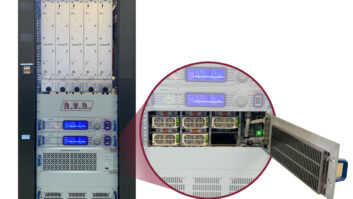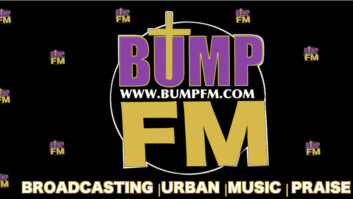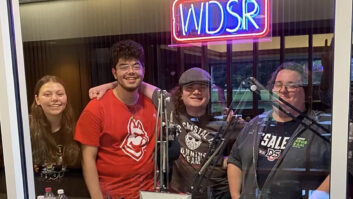The Technical Staff at Radio Free Asia Spearheads an Open-Source Approach That Can Help Your Station – for Free
The high cost of purchasing and maintaining broadcast software is becoming a concern for many radio stations. Some broadcasters are using applications for five years or more, well past their time of obsolescence. Others are simply biting the bullet and paying for regular maintenance and upgrades from the vendor, which sometimes aren’t regular enough. A few small-market stations just go without software and do things the old-fashioned way, by hand or with analog technology.
Some find an attractive alternative to the purchase of commercial applications in the use of open source software, as described by the Open-Source Initiative (OSI). OSI is a nonprofit corporation dedicated to furthering the cause of open source software.
The concept is simple. Software, according to OSI proponents, evolves more efficiently and quickly when users can read, redistribute and modify its source code. Rather than relying on a few programmers, open-source software depends on an entire community of users to improve and adapt programs, as well as fix bugs. The result is better software that evolves more rapidly than applications that are developed in the traditional closed environment, where the source code in unavailable to users.
Free resource
The OSI initiative is not new. For 20 years it has been gaining momentum in the technical cultures that built the Internet and the World Wide Web. Fueled by what many perceive as a closed monopoly controlled by Microsoft, open source is breaking out into the commercial realm, most notably with Linux, an operating system that many feel is superior to Windows. A growing number of open-source office productivity applications such as word processors, spreadsheets and databases are available.
In the broadcast realm, the technical staff at Radio Free Asia is spearheading open source through the Radio-Broadcast Open Source System project. R-Boss is a suite of Web-based programs for radio that are available free for download from the RFA techweb Web site.
Source code and documentation are included with the software, and broadcasters who download and use the programs are encouraged to improve or modify them to suit their needs, and ultimately become part of a community that shares in the creation of radio software.
Leading these efforts at Radio Free Asia is David Baden, chief technology officer, based at the group’s Washington headquarters. Baden notes several reasons for RFA to make the move to developing its own software, not the least of which were financial issues.
“We simply didn’t have the money to keep up,” he said. “For just one application we were looking at a yearly quarter-million dollar maintenance fee.”
RFA is a taxpayer-funded organization, and Baden believes that open source is a way to make the software available to those who really helped to pay for it. “It’s free to the taxpayers to use,” he quipped.
Customization issues played a part in the decision to create applications in-house.
“Our uses are very specialized; for example, many of our applications have to work in multiple languages, a problem most radio stations don’t have to face.”
Baden sees this in-house application development as a continuation of the original spirit of broadcast engineering.
“When a station purchased a console,” Baden said, “they would usually modify it or customize it to fit their unique needs. If you couldn’t afford a piece of equipment, you scrounged a schematic and built it from scratch.
“Nowadays, most broadcast engineers are seeking off the shelf software solutions, and not interested in customizing or creating their own applications, and that’s unfortunate.”
Baden, a self-taught programmer, said that while some may be intimidated by applications development, it is no more difficult than wiring a studio. A linear mindset along with some determination and practice are all that is required.
Community
Another reason to go with open source was to build a community of radio broadcasters to share and improve upon the applications that RFA has launched.
That goal has yet to be realized. While a few stations have downloaded applications from RFA’s techweb site, none have uploaded materials.
(click thumbnail)Details of an actuality including date, time and location are stored in Actual-X
(click thumbnail)This screen allows users to inspect available sound files in Actual-X
Baden remains philosophical. “We’re not discouraged, we needed to develop this software anyways. Any software development cycle can take up to 10 years, and we’re only two years into the project. Once we get a killer app out there, it should take off.”
Within the suite of R-Boss programs available for download is News-X, a news source application for the storage, searching and editing of incoming text-based news information. The user interface runs under any Web browser; it is multilingual and multi-feed capable, and can also process News Server e-mail input.
Track-X is a SQL database that functions as a broadcast scheduling and archiving tool. Track-X imports and exports meta-data to broadcast content files using the XML standard as an interchange format. The Track-X application not only permits the creation of broadcast schedules but also facilitates the future access of content. Track-X as a SQL database is a search tool for the accessing of archived content for on-demand delivery.
Actual-X is a Web-based program (see screen shots in sidebar) that enables broadcasters to share audio actualities. Digital audio files and information about the actuality are FTP’d from any location with Internet access, into the Actual-X program. The files are verified for accuracy, processed and placed into a Web access page for real-time preview and insertion into a networked digital audio system.
Audio-X is a series of file handling and conversion programs that manages the creation of and audio content within the R-Boss content delivery chain. Among the applications under development: the XEON player, working code that can be given to a network interface to work as-is. XEON uses a simple new standard to send data in and out of the effect, XML-RPC. The eXtensible Markup Language is a popular protocol for describing data, while Remote Procedure Calls are designed to run programs on other machines.
Tagged Access Streaming, another part of Audio-X, is a group of methods for accessing audio devices and files in a network-neutral way. A sound source might be a local WAV file or a mic port on the network server. Data flows can be uni-, bi- or multi-directional, allowing remote I/O, local storage while broadcasting, and multiple versions for different media types (i.e. Web, WAP, future editing or archiving purposes).
Security
Because the R-Boss applications are Web-based, system security can become an issue. Auth-X is being developed by RFA to authenticate users against a central user database. It also determines if a user is allowed to perform various tasks. New users may add themselves to the system, pending administrator approval.
The achievements of Radio Free Asia’s engineering staff in developing applications in the R-Boss project are all the more impressive when one considers the people and environment where it was created. The core development team consists of six RFA staffers. As with many commercial radio stations, RFA is understaffed in the engineering department, and most engineers have about five or six other things on their plate in addition to developing materials for R-Boss. Much of the development work for R-Boss is done in their spare time. Most, like Baden, are self-taught programmers; only one has formal education that includes a degree in information science or computer programming.
As a government-funded organization, RFA can’t pay salaries that compare with the kind of money one can earn in the commercial arena, and Baden has worked to create an environment that attracts devoted techies.
“We try and create a liberal work space within RFA. That means being more accommodating with flex time and dress code. Because of the different types of projects that are going on,” he said, “we tend to attract people who thrive on variety, as opposed to those who might want to work in an all-Microsoft shop.”
As if R-Boss isn’t enough to keep Baden and his staff hopping, there are other projects highlighted on the Web site. The 3D-Project provides free distribution and standardization of broadcast-specific 3D drawings, materials and texture bitmap files that were created to document the RFA facilities.
Radio Free Asia also hosts the SBE’s Engineer Friendly Documentation project. EFD attempts to standardize broadcast-related technical documentation into an interchangeable XML-based format.
The Debian Project also is hosted on RFE’s site. Debian is an association of individuals who have a common interest in creating a free operating system.
For information about Radio Free Asia’s R-Boss project, or to download files, visit www.techweb.rfa.org. Radio Free Asia’s mission and programming efforts are described at www.rfa.org. To learn more about the Open Source Initiative, point your browser to www.opensource.org.














